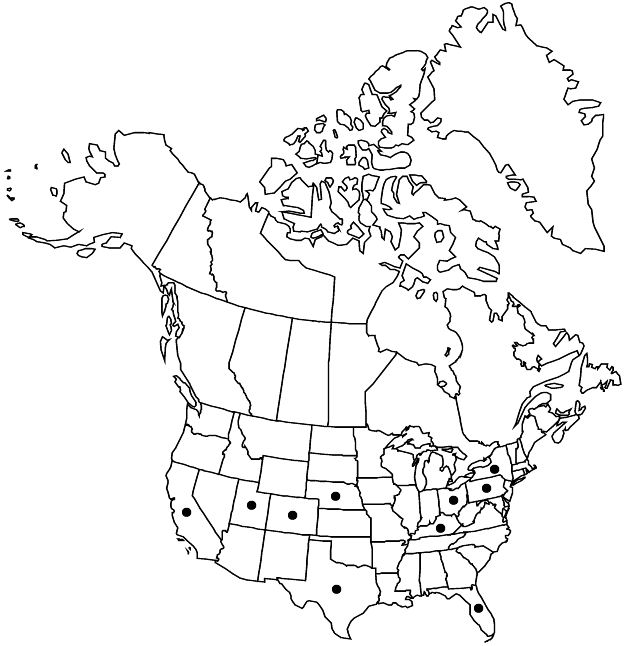Linum grandiflorum
Fl. Atlant. 1: 277, plate 78. 1798.
Herbs, annual, 10–60 cm, glabrous, glaucous. Stems ascending or sometimes decumbent at base, usually freely branched. Leaves: blade linear to lanceolate or narrowly elliptic, 10–30 × 2–3(–7) mm. Inflorescences cymes, few-flowered. Pedicels 10–25 mm. Flowers heterostylous; sepals lanceolate, 7–11 mm, margins glabrous, apex acuminate; petals bright red to maroon, fading to purple, broadly obovate, 15–30 mm; stamens 8–10 mm; anthers 5 mm; staminodia not seen; styles connate proximal 1/2, 4.5 mm (short-styled) or 8–10 mm (long-styled); stigmas clavate. Capsules ovoid-globose, 6–7 mm diam., apex apiculate, segments persistent on plant, margins not seen. Seeds 2–3 × 0.5–1 mm. 2n = 16.
Phenology: Flowering Apr–Sep.
Habitat: Disturbed areas.
Elevation: 0–2700 m.
Distribution

Introduced; Calif., Colo., Fla., Ky., Nebr., N.Y., Ohio, Pa., Tex., Utah, n Africa.
Discussion
Linum grandiflorum occasionally escapes from gardens and persists along roadsides and trails. This showy garden plant has blue anthers.
Selected References
None.